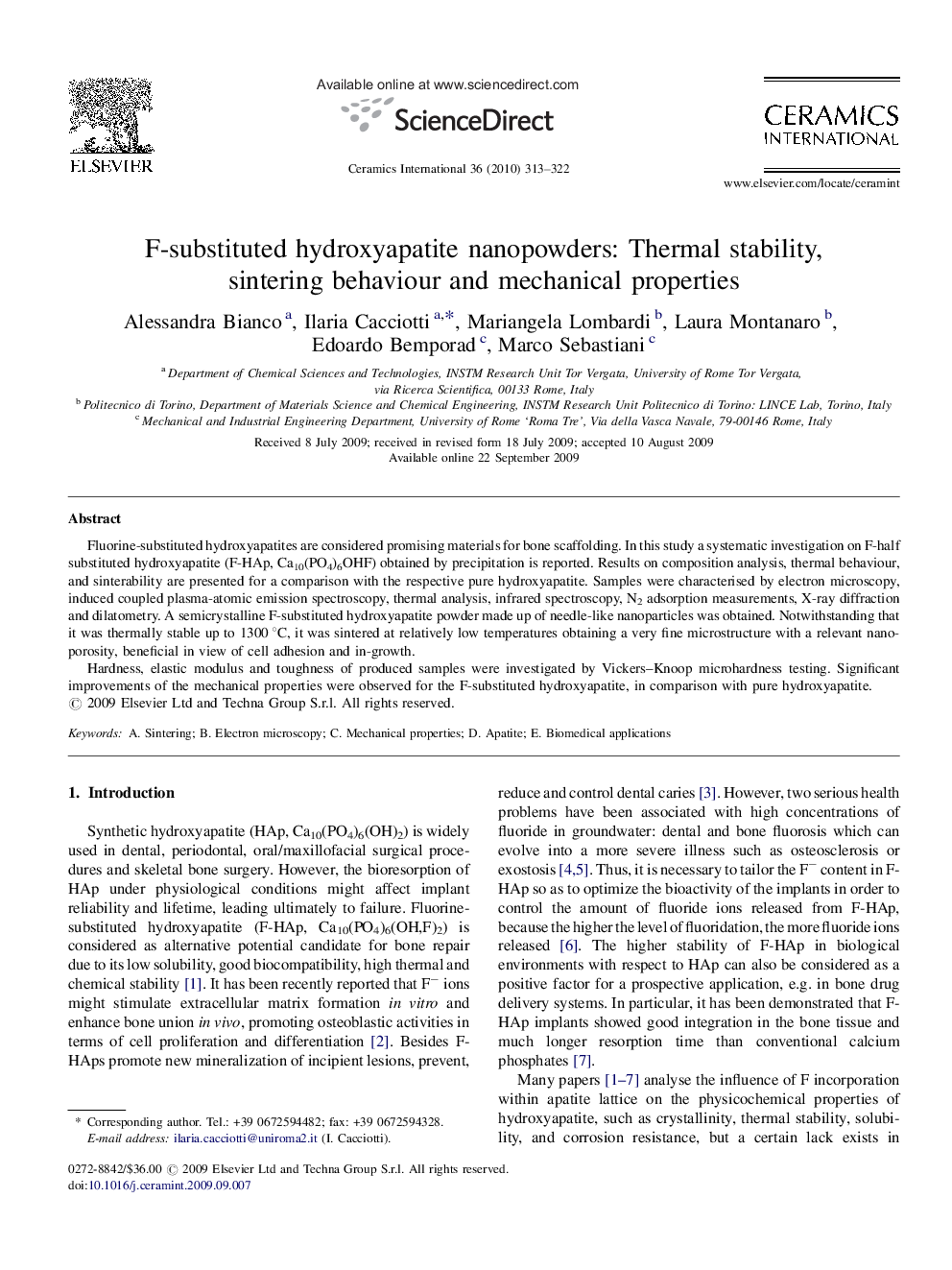| Article ID | Journal | Published Year | Pages | File Type |
|---|---|---|---|---|
| 1463405 | Ceramics International | 2010 | 10 Pages |
Fluorine-substituted hydroxyapatites are considered promising materials for bone scaffolding. In this study a systematic investigation on F-half substituted hydroxyapatite (F-HAp, Ca10(PO4)6OHF) obtained by precipitation is reported. Results on composition analysis, thermal behaviour, and sinterability are presented for a comparison with the respective pure hydroxyapatite. Samples were characterised by electron microscopy, induced coupled plasma-atomic emission spectroscopy, thermal analysis, infrared spectroscopy, N2 adsorption measurements, X-ray diffraction and dilatometry. A semicrystalline F-substituted hydroxyapatite powder made up of needle-like nanoparticles was obtained. Notwithstanding that it was thermally stable up to 1300 °C, it was sintered at relatively low temperatures obtaining a very fine microstructure with a relevant nano-porosity, beneficial in view of cell adhesion and in-growth.Hardness, elastic modulus and toughness of produced samples were investigated by Vickers–Knoop microhardness testing. Significant improvements of the mechanical properties were observed for the F-substituted hydroxyapatite, in comparison with pure hydroxyapatite.
